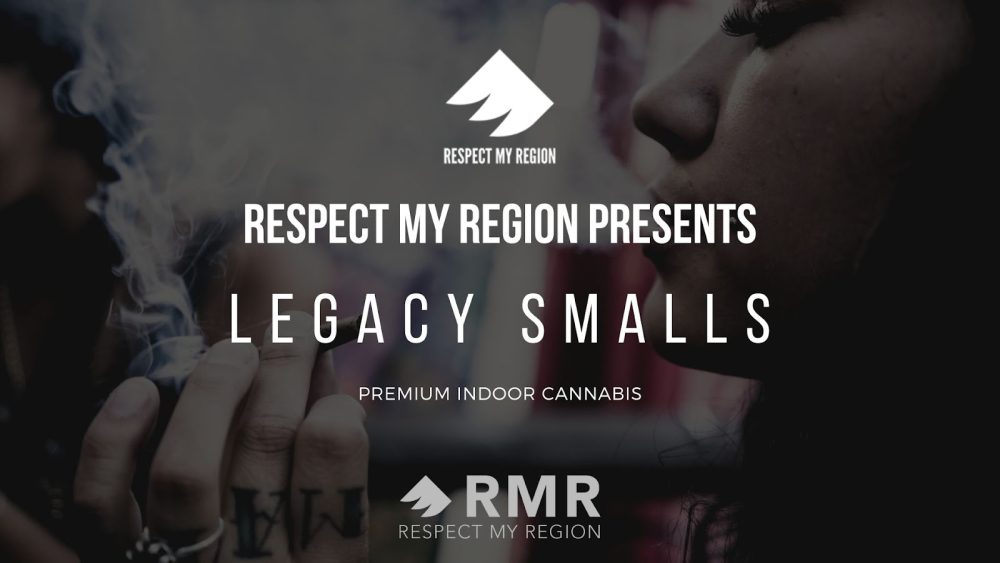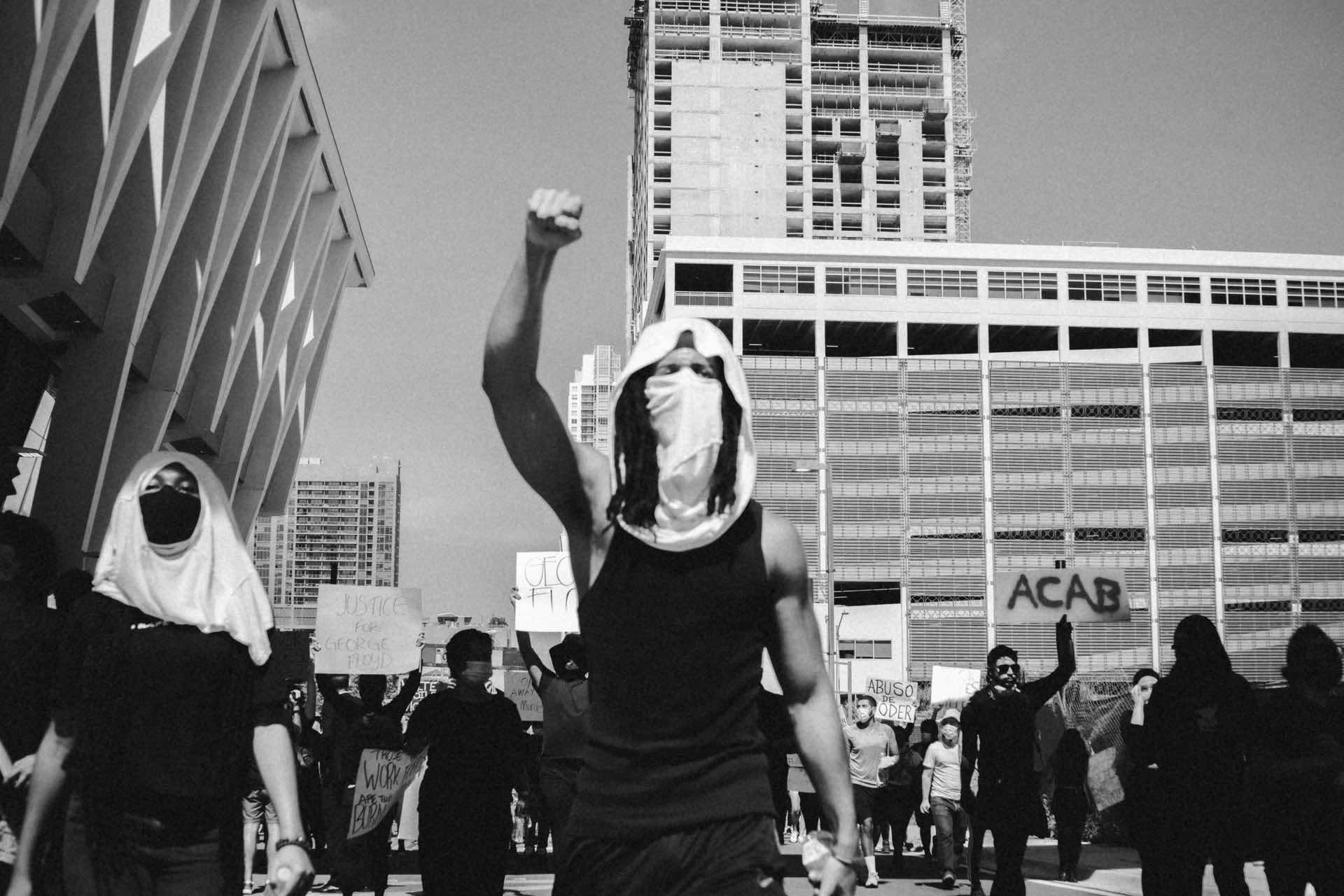Respect My Region as a company vehemently condemns racism in all forms. We firmly believe that bigotry, prejudice, and violence have zero places in our society. In the wake of the deaths of George Floyd, Breonna Taylor, Ahmaud Arbery, and countless others at the hands of police it’s glaringly apparent that change is long overdue. Not just any kind of change, we’re talking about lasting, meaningful, fundamental change to the core of our society. Systemic racism is part of the bigger picture of what the Black Lives Matter movement is currently trying to abolish. As those standing firmly in solidarity with all those seeking to inspire this change, we wanted to delve into this topic.
Racism has never gone away at any given point in American history. Whether it was more brazenly and outwardly done in the past or through subversive avenues such as cultural appropriation today; it still exists. Many celebrated Obama’s presidency as a benchmark of progress, for example. But, these small windows of hope towards change mean nothing in the grand scheme of centuries of racial injustices. At every level of our society, there exists a pillar of racism it’s built on top of. By continuing to apply pressure and become more aware of these terrible fulcrums of society, we can topple them down by taking action and getting educated.
We believe it’s important to dive into each aspect of American society that breeds racial bias. Racism comes in all forms, some more subtle than others. It may be difficult to detect on some levels for many of those with privilege that simply believe they are “not racist.” This ideal is one of the core tenants of the change needed at present. It’s not enough to “not be racist” at this time. We need to rise up to hold the police and our government accountable for their vicious prejudice, incarceration, and murder of innocent Black peoples’ lives.
Every white person needs to be outspokenly ANTI-RACIST right now to shake the system to its core. Silence is violence in this day and age. This is because when you remain silent, these pillars of systemic racism continue to thrive in America. And as a result, justice remains unserved. The statistics below come from an article that Ben & Jerry’s put out back in 2016 that still holds significant relevance.

Racism Infecting Every Structure Of Our Society
After Trump came into office hate crimes noticeably rose, as well as white supremacist activities, AND anti-immigrant rhetoric. These are horrendous and disruptive examples of racial bias, hate, and prejudice that we wholly condemn. But it’s not systemic racism.
It’s not as much about the violence of outward racial aggression as it is about the everyday decisions made by people who probably don’t even think they’re racist. Institutional or systemic racism is a form of racism that is expressed in the practice of social or political institutions. You can see its reflection in disparities regarding wealth, income, criminal justice, employment, housing, healthcare, political power, education, and even more.
Consider the simple fact that white people occupy the most lofty positions of decision-making power in America. Is it a surprise that minorities such as Black people don’t get a fair chance? Let alone the ability to gain substantial opportunities? Calling out these forms of systemic racism will help bring about more of a global awakening to the glaring problem that needs addressing.
Wealth
White families hold 90% of the national wealth, Latino families hold 2.3%, and Black families hold 2.6%. The Great Recession hit minority families even harder, actually increasing the wealth gap overall. On average, Black families are earning a little over half the amount white families earn. For every $100 white families earn, Black families are only earning $57.30. A closer look at the employment of white versus Black people reveals a disparaging gap in the accruement of wealth.
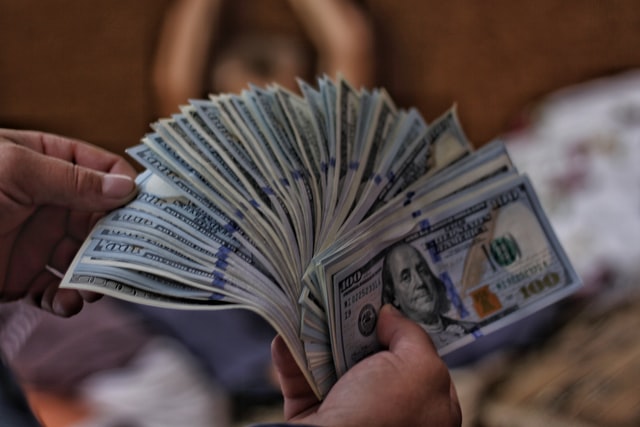
Employment
It should come as no surprise that rewarding employment is a core step to building wealth. The unemployment rate for Black people has been consistently two times the rate for whites for well over 60 years. Whether the economy is in a booming or trough-like state, Black people continue to stay steadily unemployed.
You’d think higher education would change some of that. But, Black people with degrees are in fact twice as likely to be unemployed as any other graduates. There have even been studies that show that job applicants with white-sounding names have a 50% better chance of getting a callback. Airbnb guests with “Black-sounding names” even statistically get less positive reviews from property owners.
Education
The education system is a tremendously large proprietor of systemic racism. Many public schools gain a lot of funding from income and property taxes, so, in low-income areas, how are the schools getting funding? They don’t. Schools in largely Black districts are spread incredibly thin, have overcrowded classes, and don’t have money to pay for extracurricular activities. What they do usually have is a lot of security and rules. Strict policies and punishments are another way that the education system takes advantage of Black students.
Black students are more than three times as likely than white students to be given a suspension for the same act. These make up nearly half of all school suspensions. Looking at the overall representation of student enrollment, Black students make up 16%. They also make up 27% of students that are referred to law enforcement.
Here’s the big picture: once Black children are put into the criminal justice system, they are 18 times more likely than white kids to catch a sentence as adults. This is called the “school-to-prison pipeline,” or “schoolhouse-to-jailhouse track.” It gives a formal name to the disproportionate amount of minors and young adults from disadvantaged backgrounds that end up facing multiple incarcerations throughout their lives. This comes as a result of increasingly harsh school and municipal policies imposed on them from an early age.
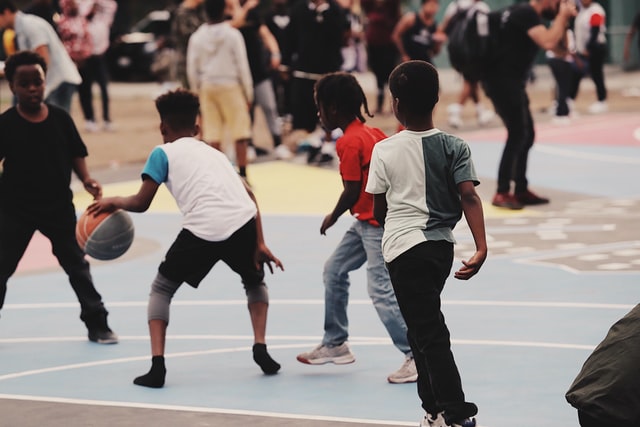
Criminal Justice
Consider this: Black people make up 13% of the general population, and yet, they comprise over 40% of the prison population. Also consider the fact that if a white and Black person commits the same crime, guess who has a better chance of getting arrested? After a Black person has been incarcerated once, their odds of getting another conviction drastically rise. The history of policing and the nature of over-policing have made a huge contribution to this trend.
The first modern police force came in 1829 by Sir Robert Peel. The London Metropolitan Police originally began as a tool to suppress the public from uprisal, rioting, and basically any demand for serious political or social reform. This “Peace Preservation Force” was meant to be a cheaper alternative to managing the British colonial occupation of Ireland and its subsequent uprisings.
When Peel became the home secretary in 1822 he set to establishing the London Metro Police on the principles of “protecting property, quelling riots, putting down strikes and other industrial actions, and producing a disciplined industrial workforce.” The police are still programmed into demonizing and punishing any major forms of protest or demands for sociopolitical reform. They’re basically supposed to subdue anyone that doesn’t fit into what the white majority has deemed law. Does it make sense, then, that over-policing is common in Black areas and neighborhoods? Why do they continue to get so much funding to keep perpetuating such racist and dated ideals?

Housing
Let’s talk about redlining. Redlining is the systematic denial of various services by federal government agencies, local governments, including the private sector, to residents of specific neighborhoods or communities. The vehicle of this denial is either directly or through the selective raising of prices.
When the 1930s came and mortgages became more affordable and suburban living sprung into existence, neighborhoods became valued differently. All-white neighborhoods were naturally given high marks, while Black and minority neighborhoods did not. This effectively corralled Black people and POC into less-than-favorable parts of towns and cities with poor resources and opportunities for urban development.
The Home Owner’s Loan Corporation (which then became private banks,) would mark minority neighborhoods in red as risky investments. This practice that essentially barred Black people and other minorities from sharing in opportunities to build wealth was “outlawed” in the 1960s. But, the practice never went away for even a second.
Redlining not only keeps low-income Black families in these “risky” areas but makes it so wealthy Black families can’t move in. Expensive loans, poor amenities, and dangerous living conditions make even wealthy Black families turn away from these communities.
Black families are then only displaced into white neighborhoods where their rent and/or loan is even higher. Then the problem arises of their safety within their own neighborhoods. A wealthy Black family in a predominantly white neighborhood often become targets of prejudice and hate. From every angle, the racial wealth gap is working against Black people.
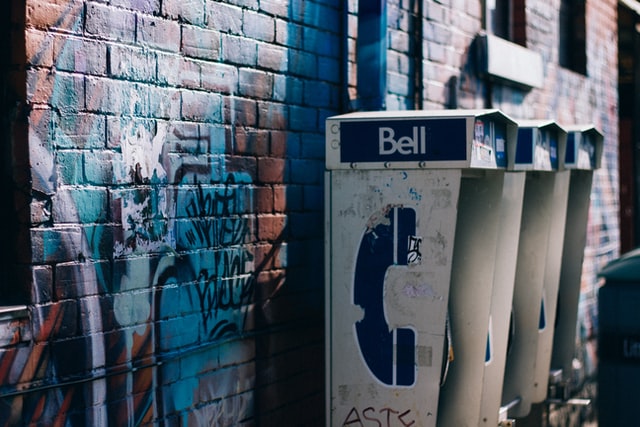
Surveillance
One of the luxuries of being white is that you’re typically not constantly looking over your shoulder in public and even private spaces for the police. For Black people, this is not their reality. Over half of all young Black Americans have personal experience, as well as know someone if not multiple others that have seen harassment by the police.
On average, Black drivers are 30% more likely to be pulled over, and twice as likely to die in pedestrian accidents than whites. There’s even a study that suggests motorists are less likely to stop for Black people at the crosswalk. Muslims have also been long-known to be under increasingly heavier surveillance.
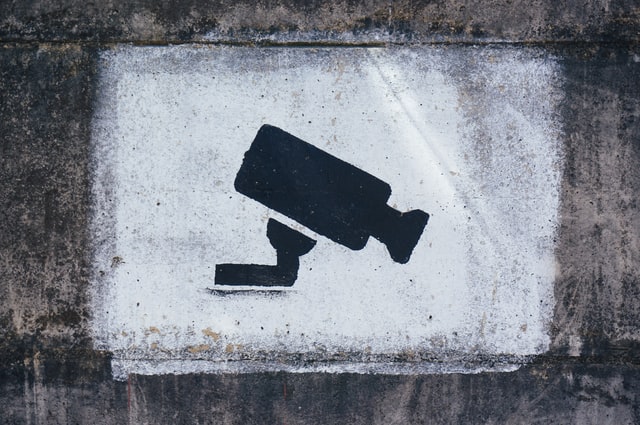
Healthcare
One of the biggest and most corrupt facets of systemic racism is the healthcare system. Black people face palpable discrimination from doctors, healthcare workers, and the system itself. Emergency medical care access is also massively unavailable to Black Americans. This is creditably due to the lower quality of hospitals Black people are usually able to gain access to. These hospitals also typically have less experienced practitioners on staff.
Harriet A. Washington’s book Medical Apartheid highlights another key factor in this story. It details the flush history of medical experimentation on Black Americans in the US. These go back all the way to the middle of the eighteenth century. Let’s take a moment to remember the Tuskegee syphilis experiment from 1932 until 1971.
Black people with this disease were intentionally denied treatment. This was so they could follow the progression of the disease in all its stages. The medical world has abused Black people for centuries to further their own experimentations. They’ve simultaneously instilled dehumanizing racism into the heart of their community. There’s also been plenty of medical experimentation in Africa that links to cases in America.
On the other end, Black doctors are less likely than similarly qualified white peers to receive any government grants for research projects. We’ll widen the scope even more. Black Americans often become vulnerable to stress-related health issues that can lead to chronic issues later on from a lifetime of oppression and coded racism.
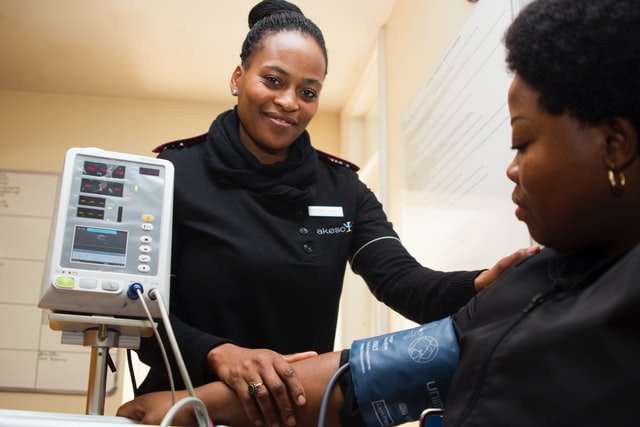
What Can You Do To Take Action?
We all need to acknowledge that systemic racism is still a thriving disease in our society and we need to collectively stand together in confronting it. On every front, we need to fight—in our local areas, towns, cities, neighborhoods, family members, and especially ourselves. Starting a conversation with people you are close with and checking on where family members stand in the dismantling of racism is a vital step. We all need to band together to fight this evil that’s built into the core of our society.
Respect My Region is continuing to amplify Black voices through our content and platform. Through donations, campaigns, and content we’re hoping to make an impact. Additionally, we’re working to expand our team to represent more diverse voices. We know there’s something new we can do each day to continue this fight and help bring about massive change and we’re dedicated to this goal.
We as a company are committed to standing in solidarity with all POC to dismantle the racist constructs of our society. We’re working to create as many ways to raise money as we can to continually give back to the Black community.
You can take further action by donating to community bail funds and Black-run organizations and charities. You can also sign petitions, send letters to local government, REGISTER TO VOTE, lend aid to protestors, spread knowledge on your social media channels. Whatever you can do to keep this fight in the face of our government is utterly necessary right now.
The system has failed us and it needs immediate correction. It’s imperative that we DEFUND THE POLICE, reinvest in our communities, and bring swift justice to every police officer that has endangered or ended innocent Black lives. Systemic racism must end. BLACK LIVES MATTER.
Head Here To Start Taking Some Initial Steps Of Action
Watch This Simpler Explanation Of Systemic Racism
RAPPER WEED: WHICH RAPPERS HAVE CANNABIS PRODUCTS IN THE MARKET?
10 UNDERRATED FEMALE RAPPERS YOU SHOULD LISTEN TO RIGHT NOW
9 RAPPERS FROM DETROIT YOU NEED TO KNOW THIS YEAR
